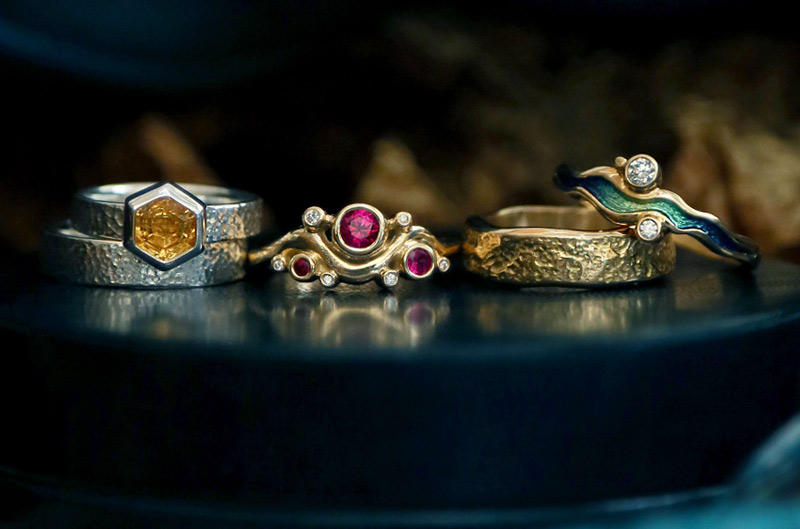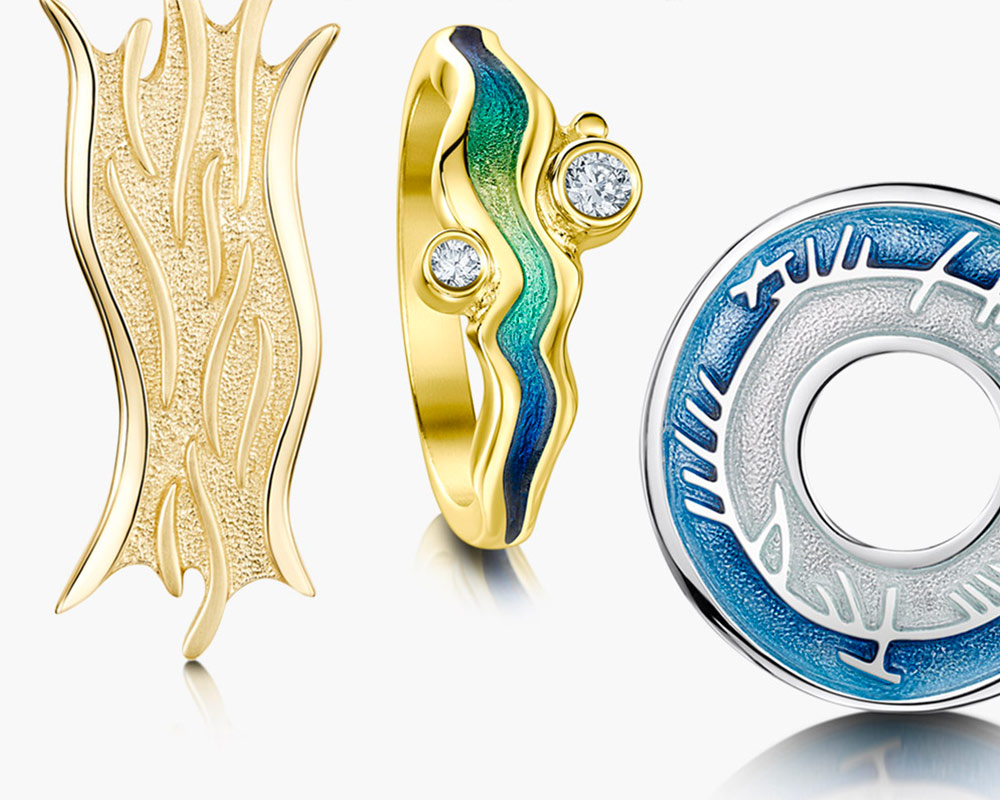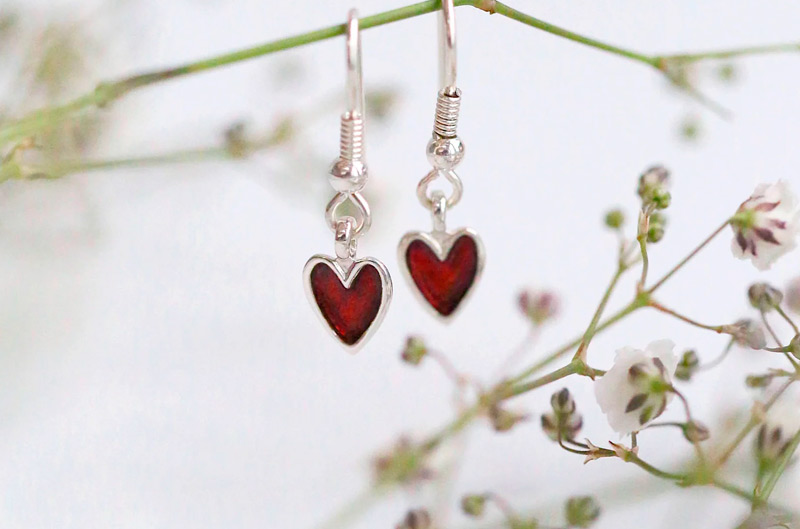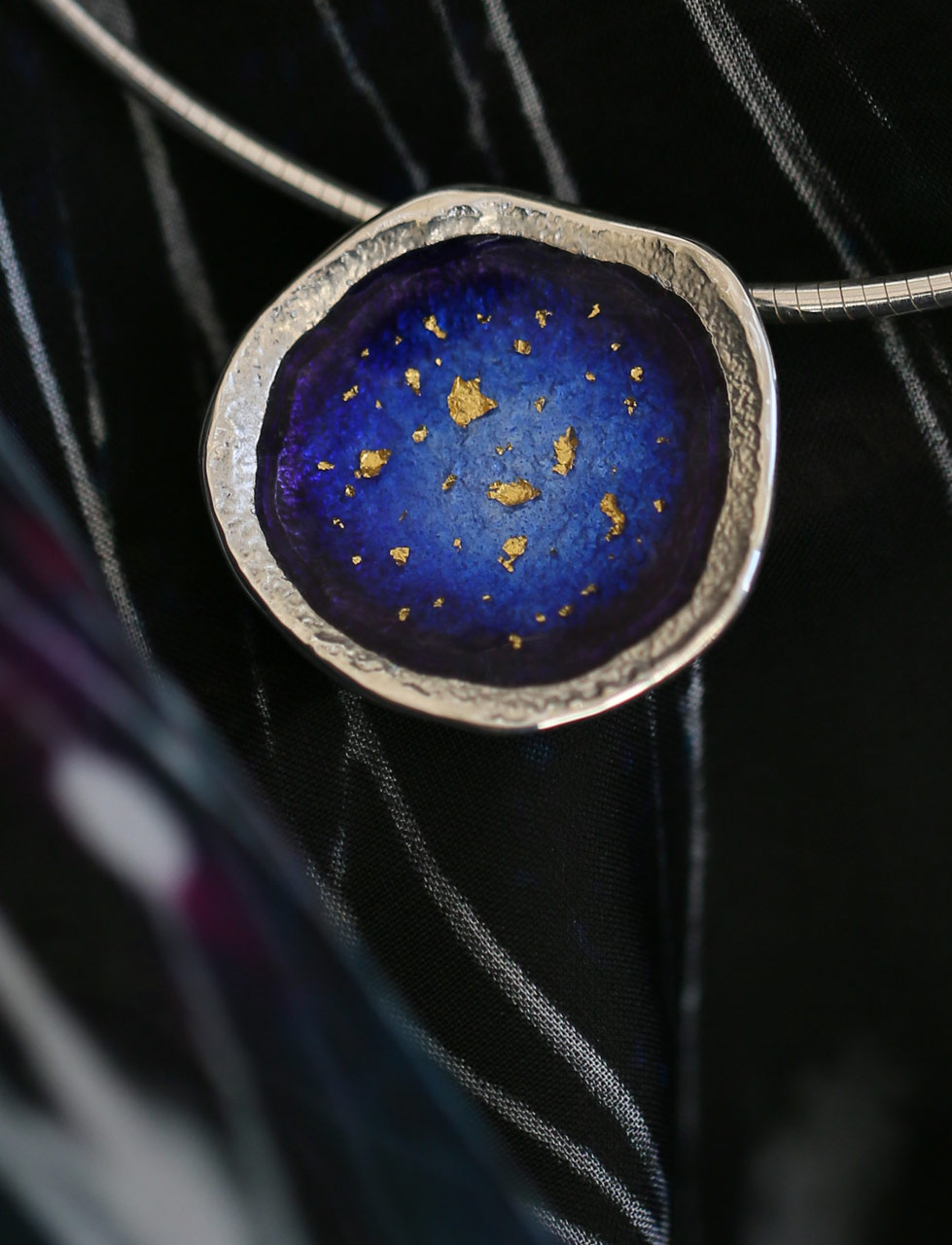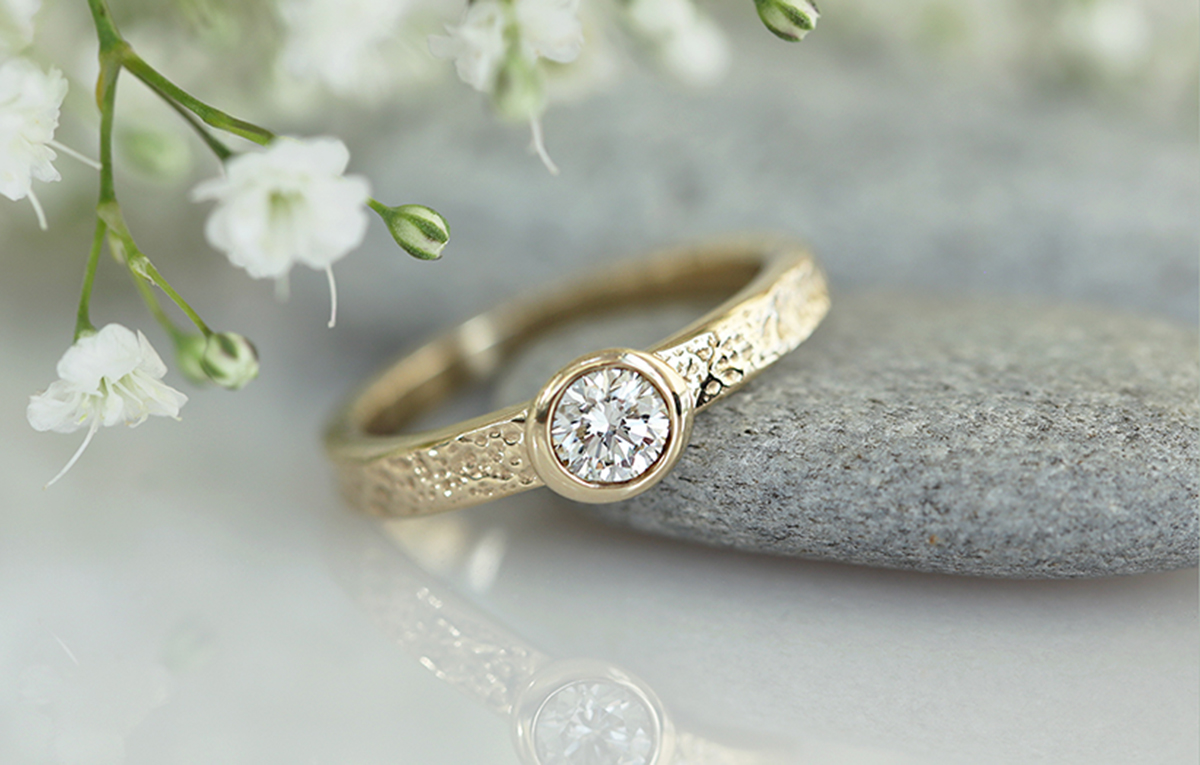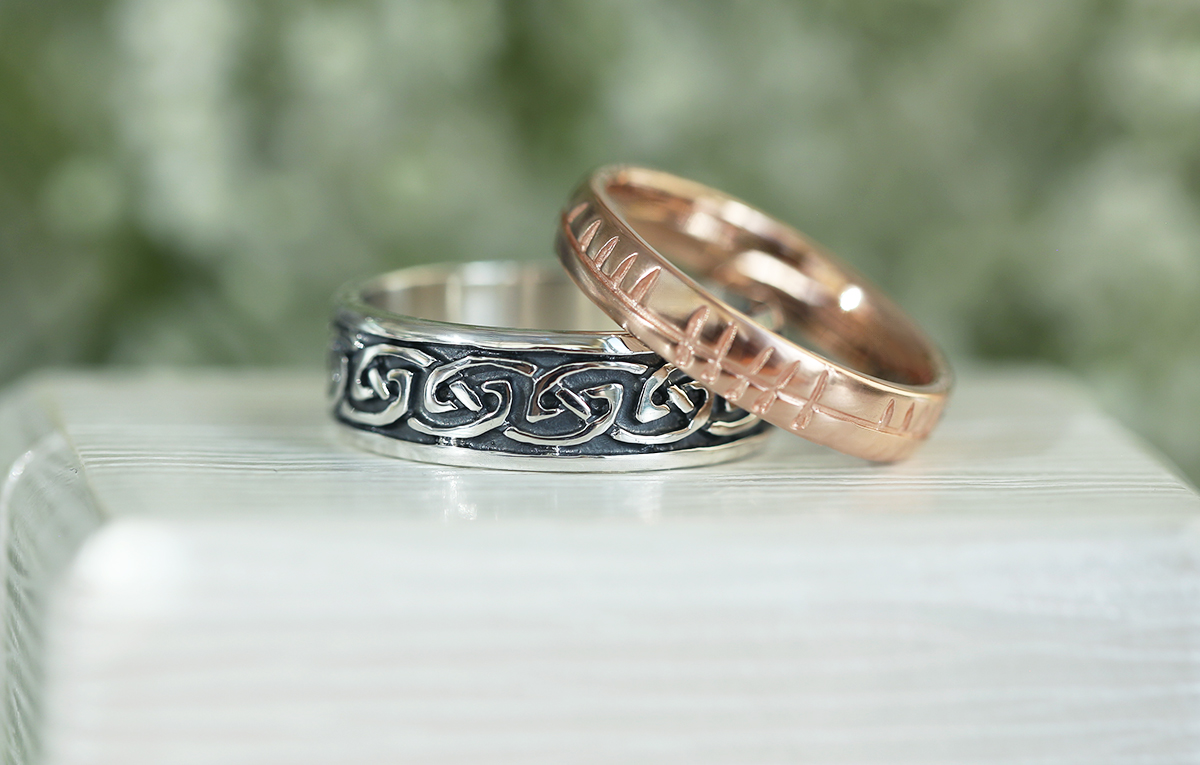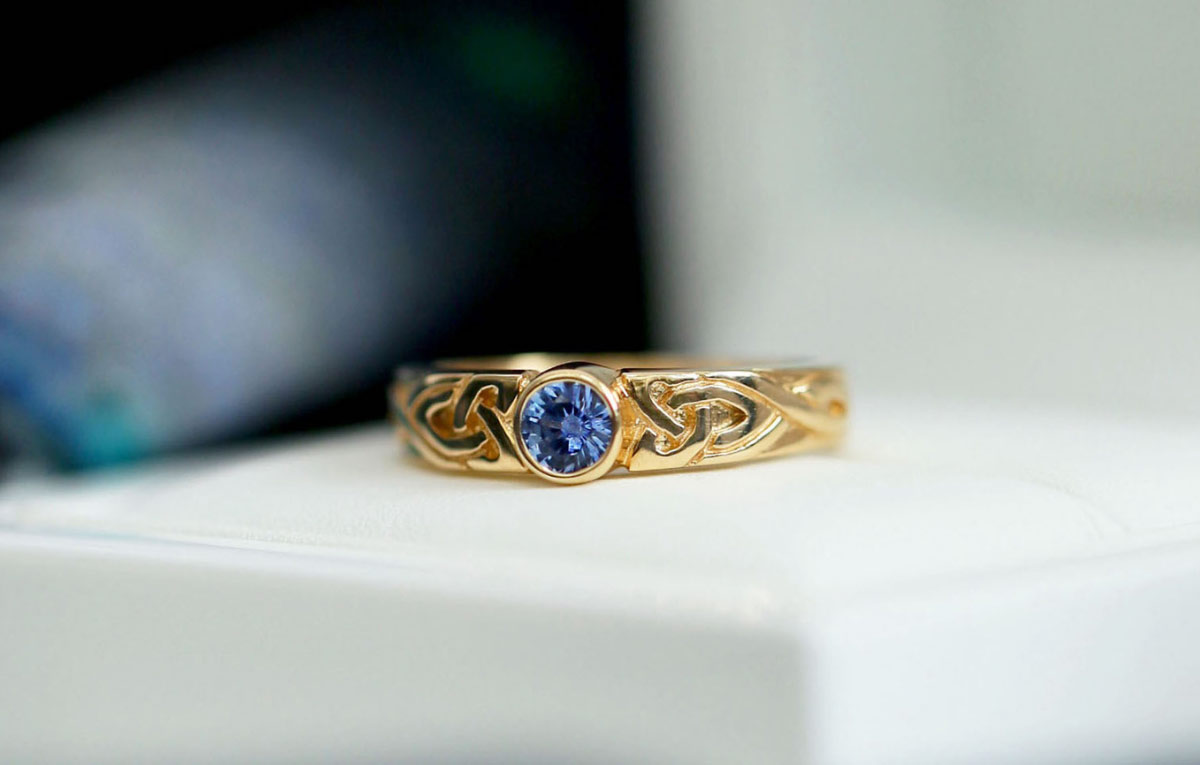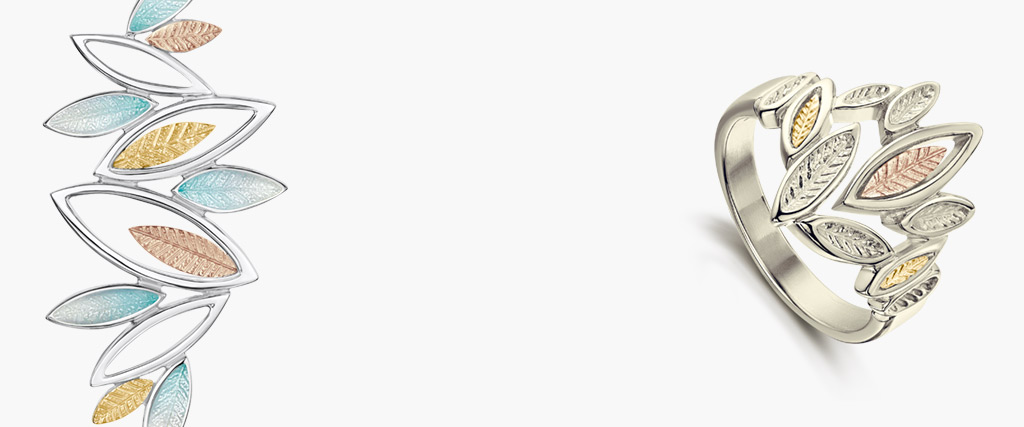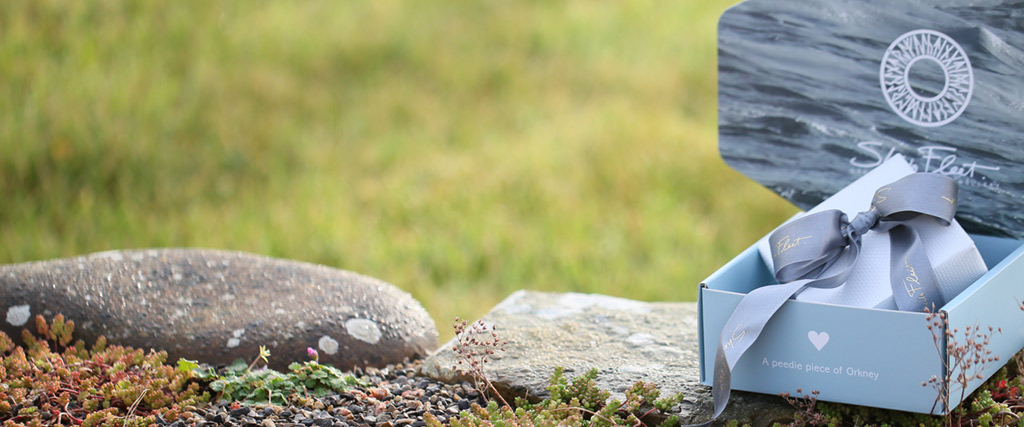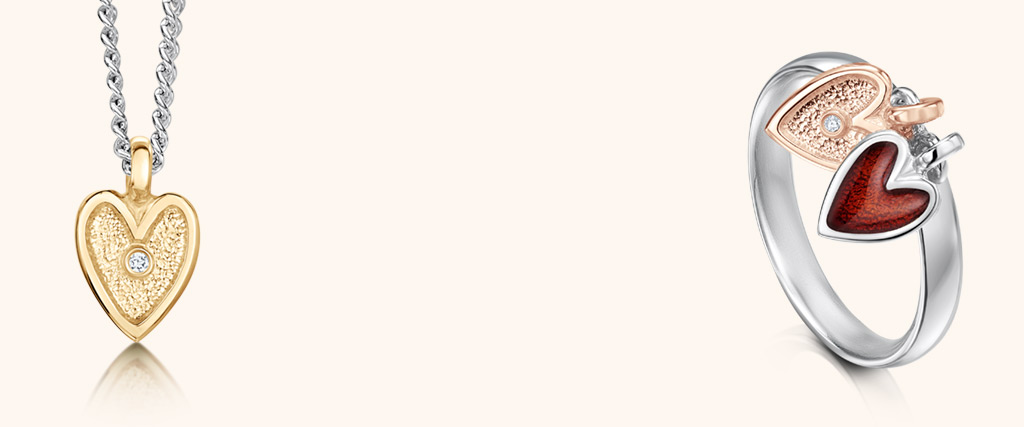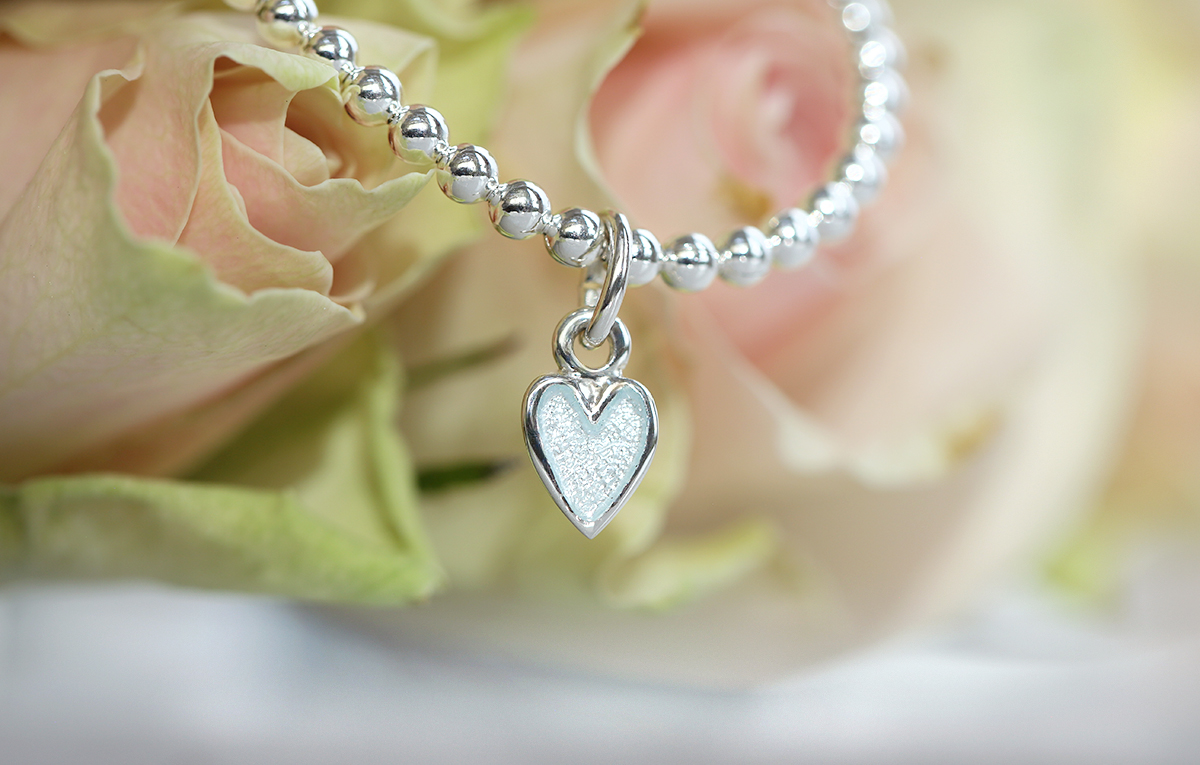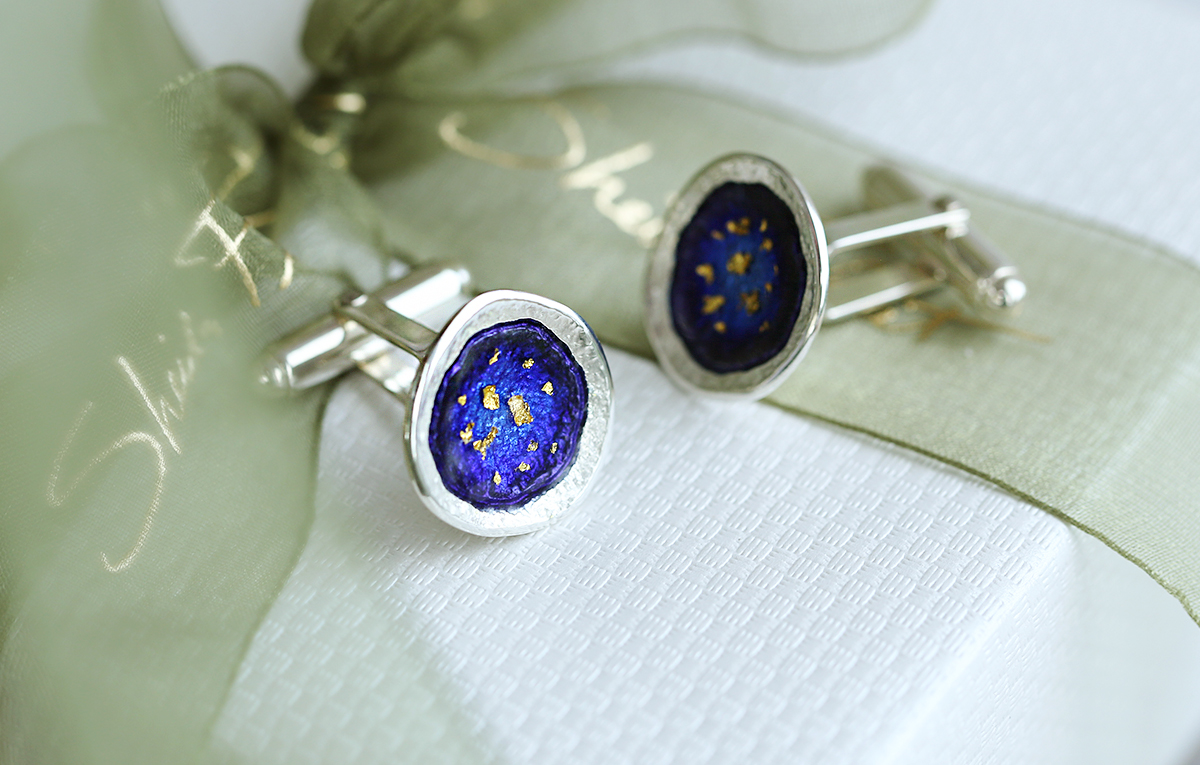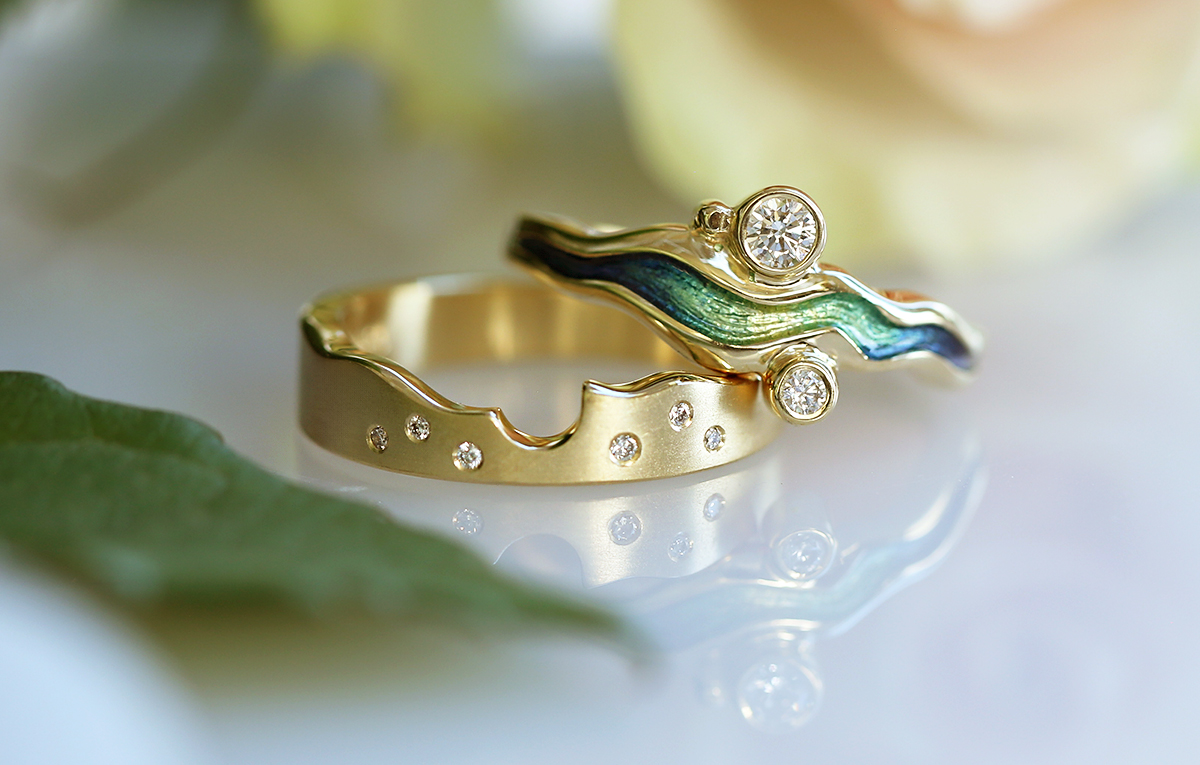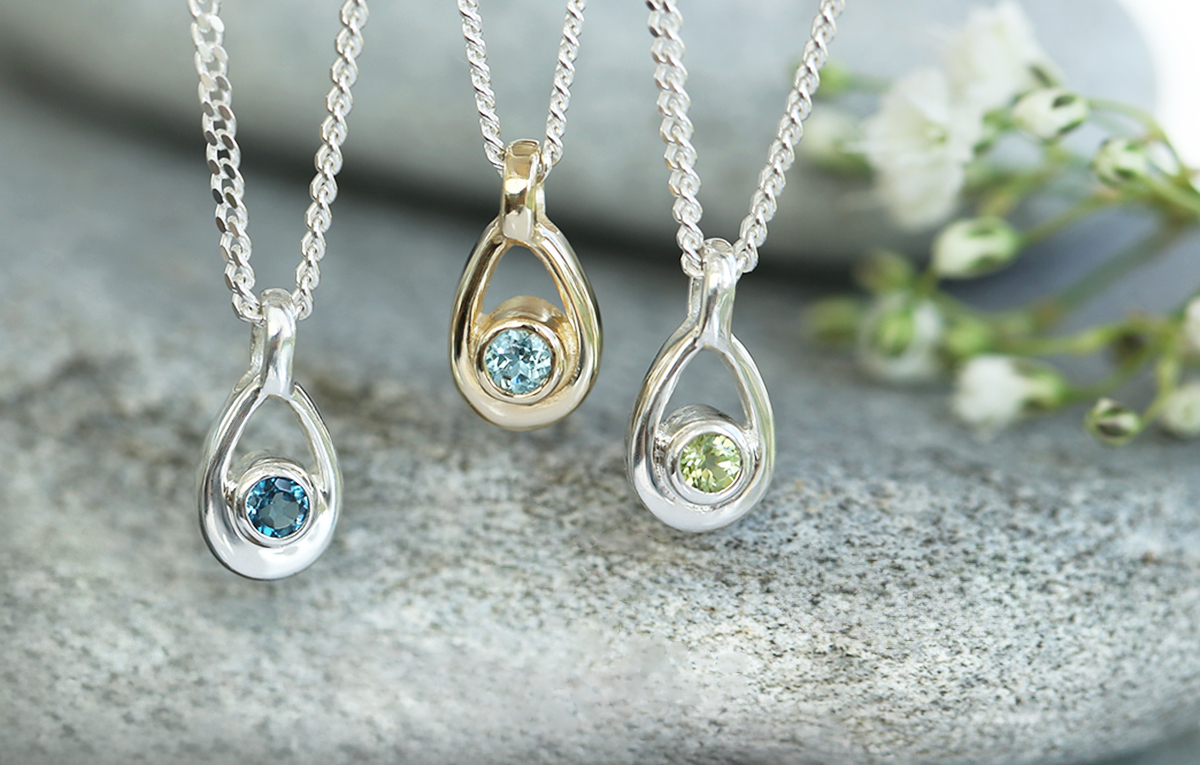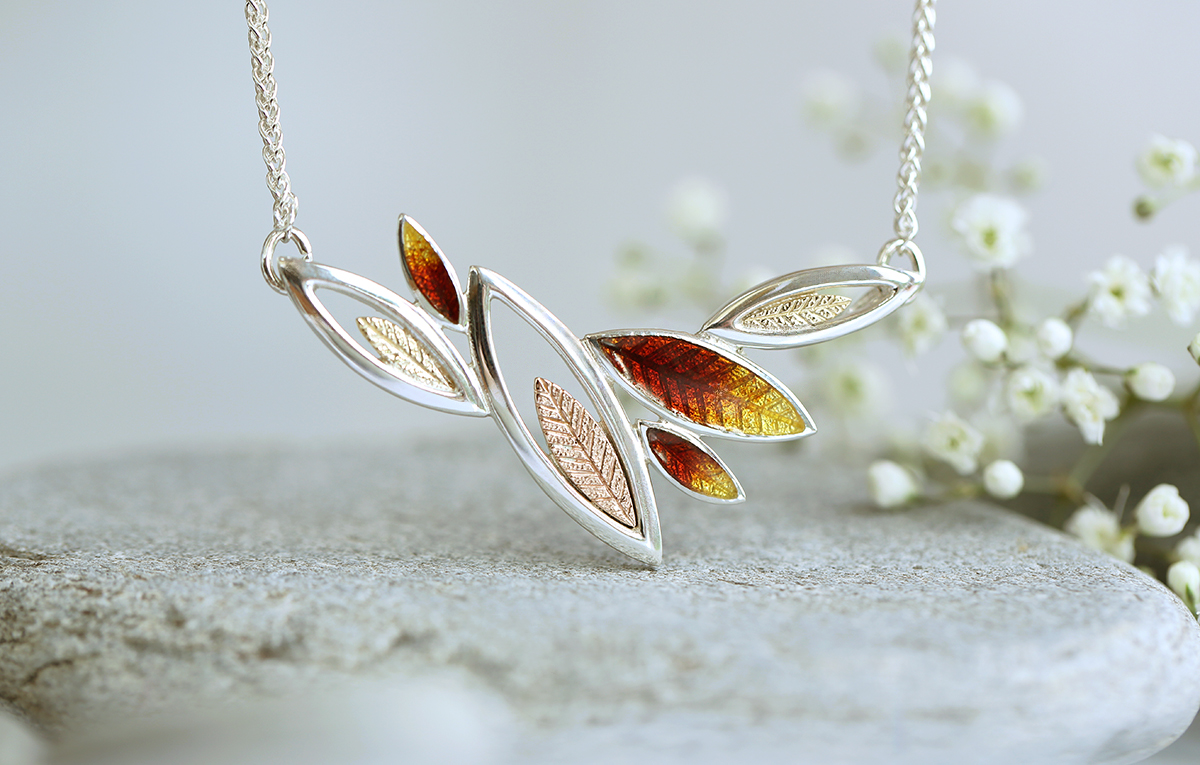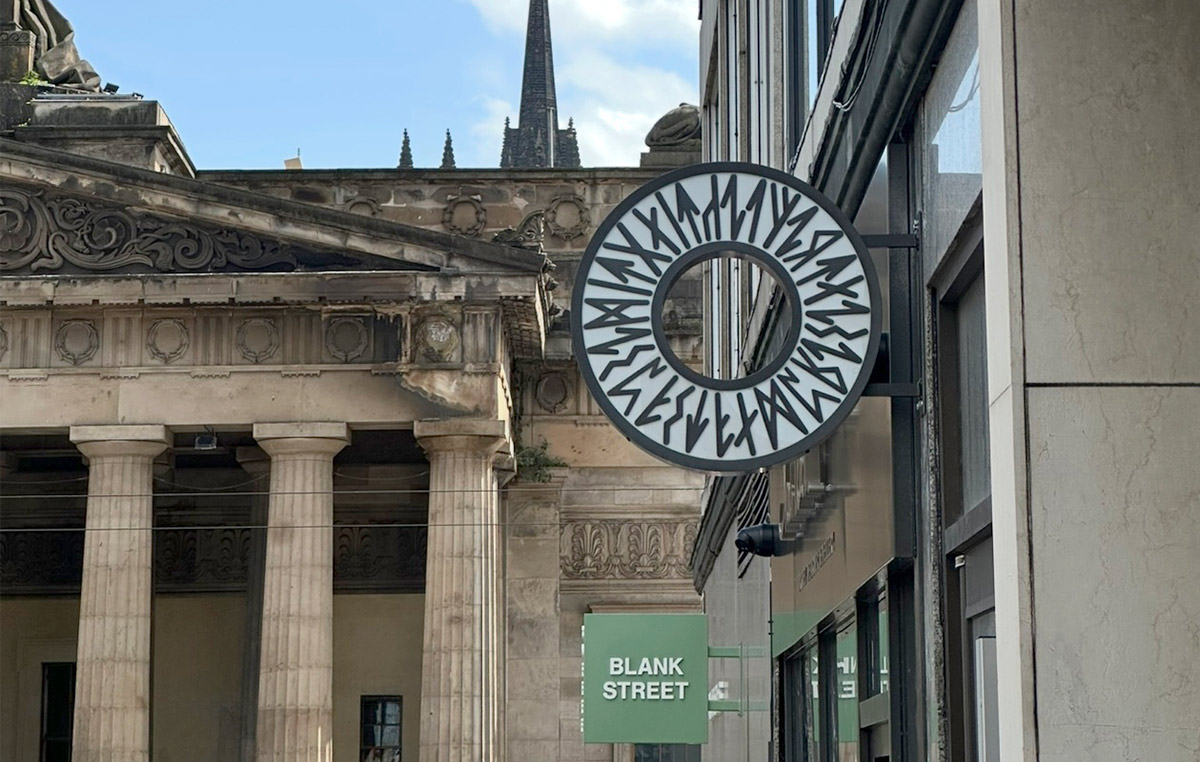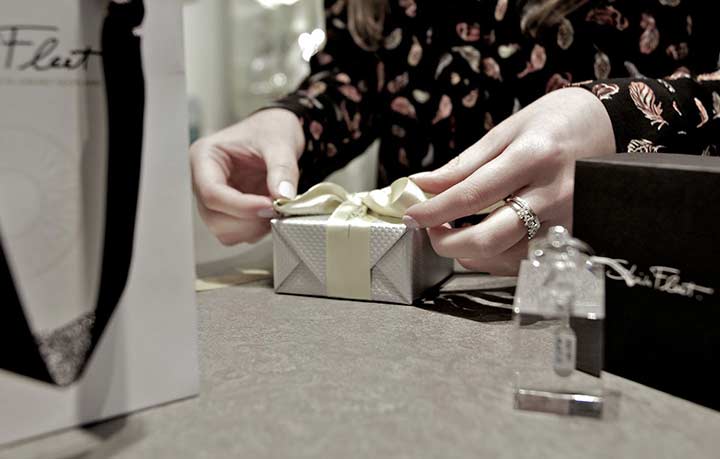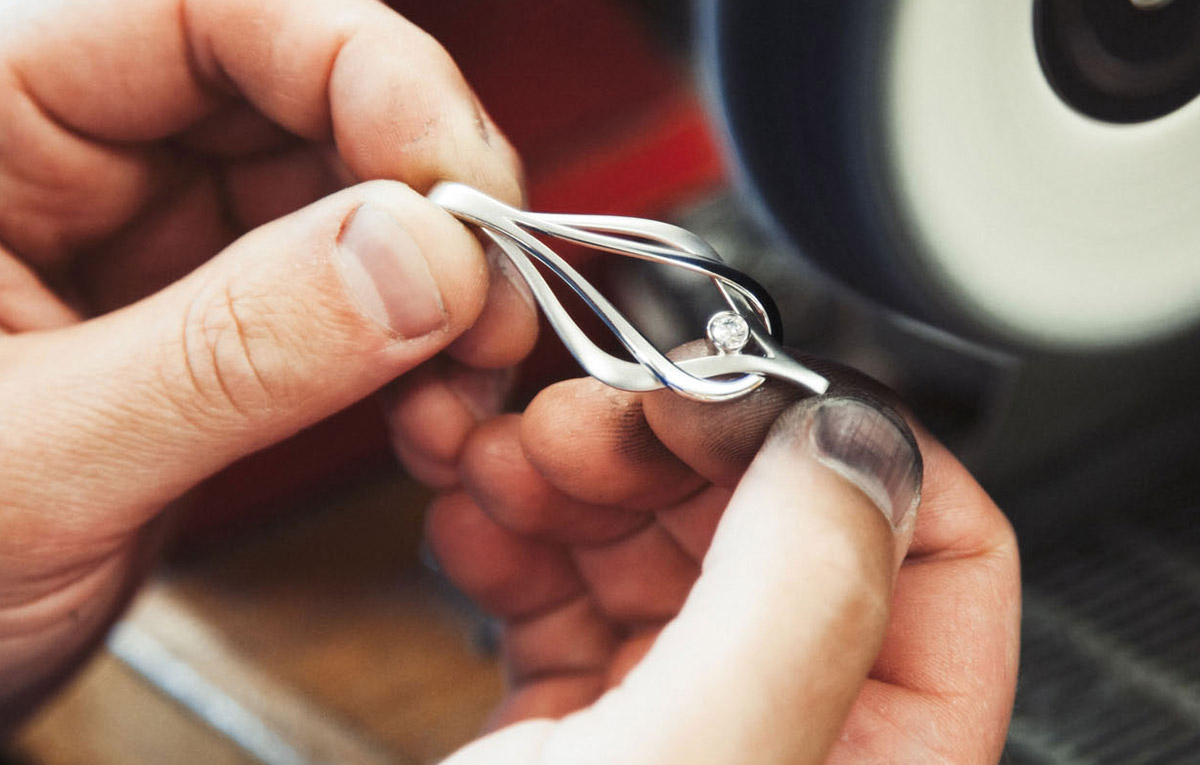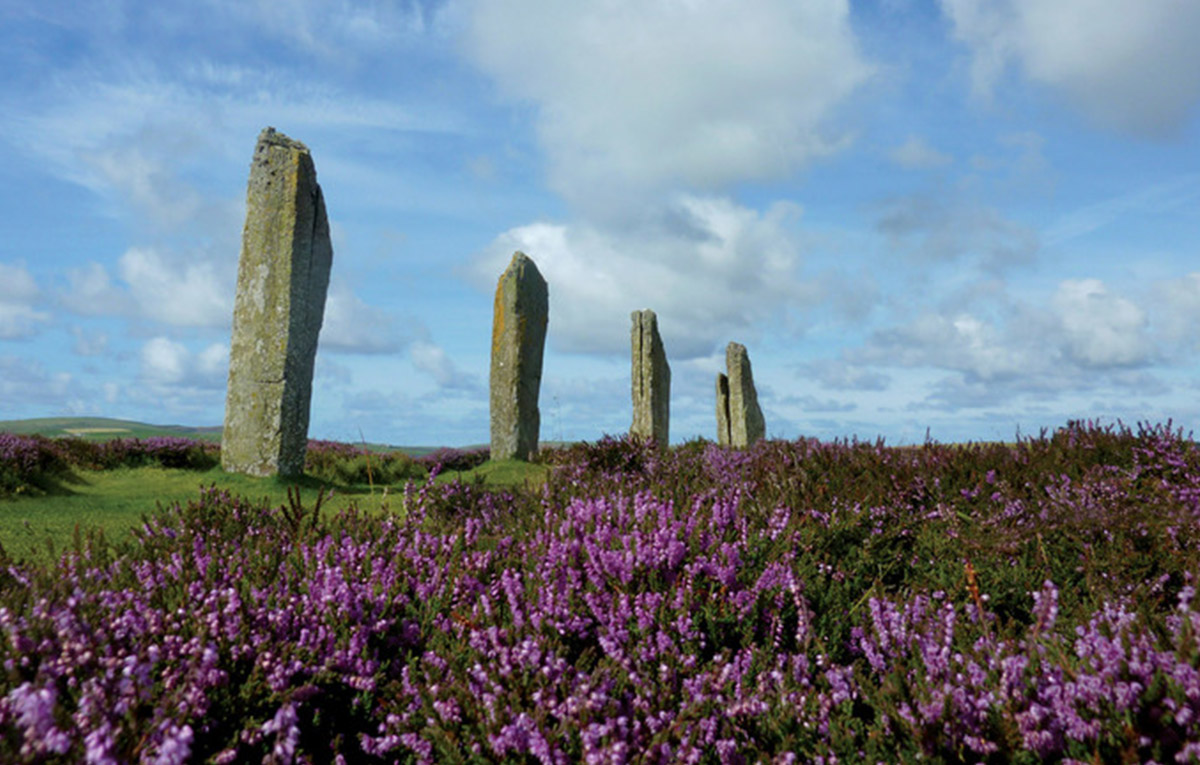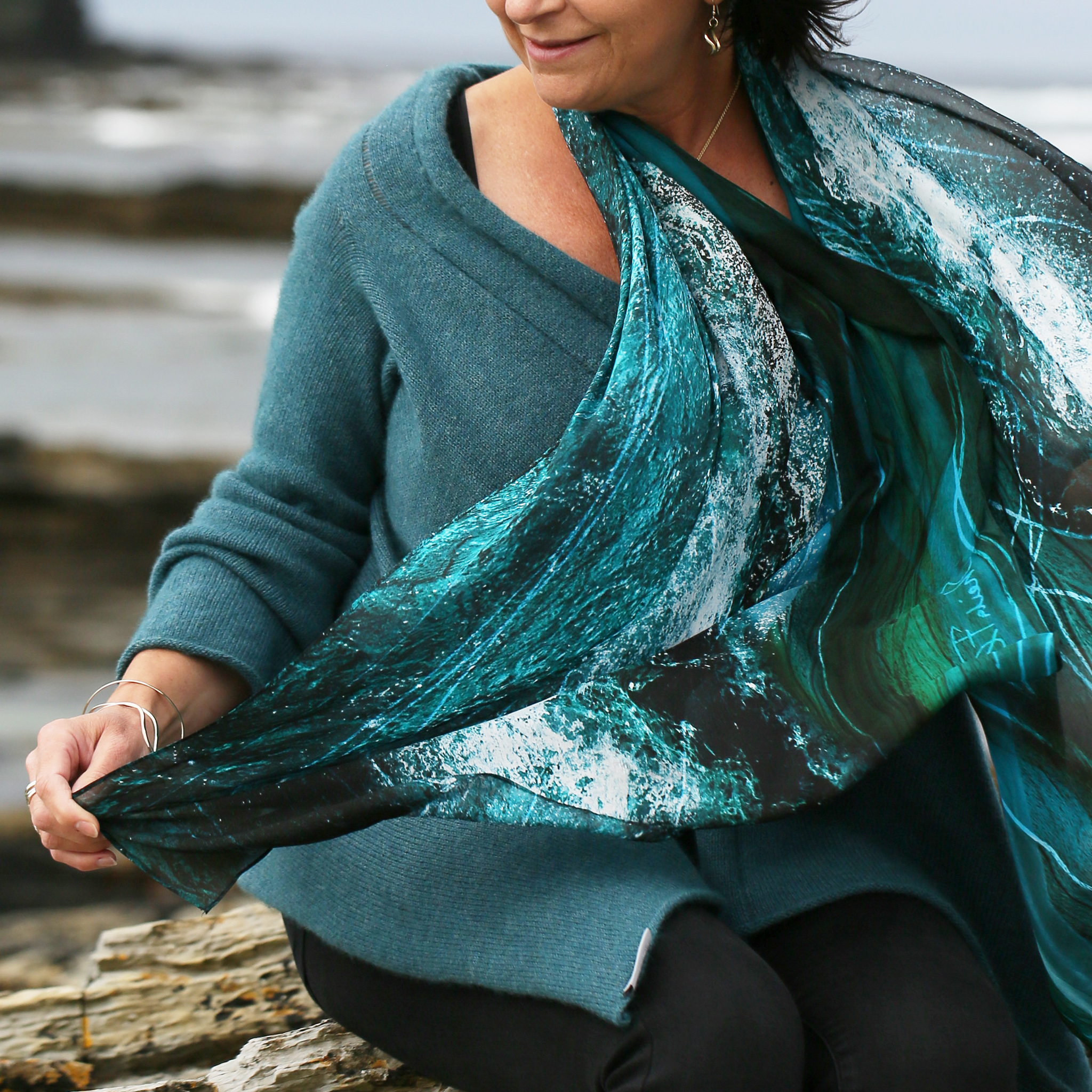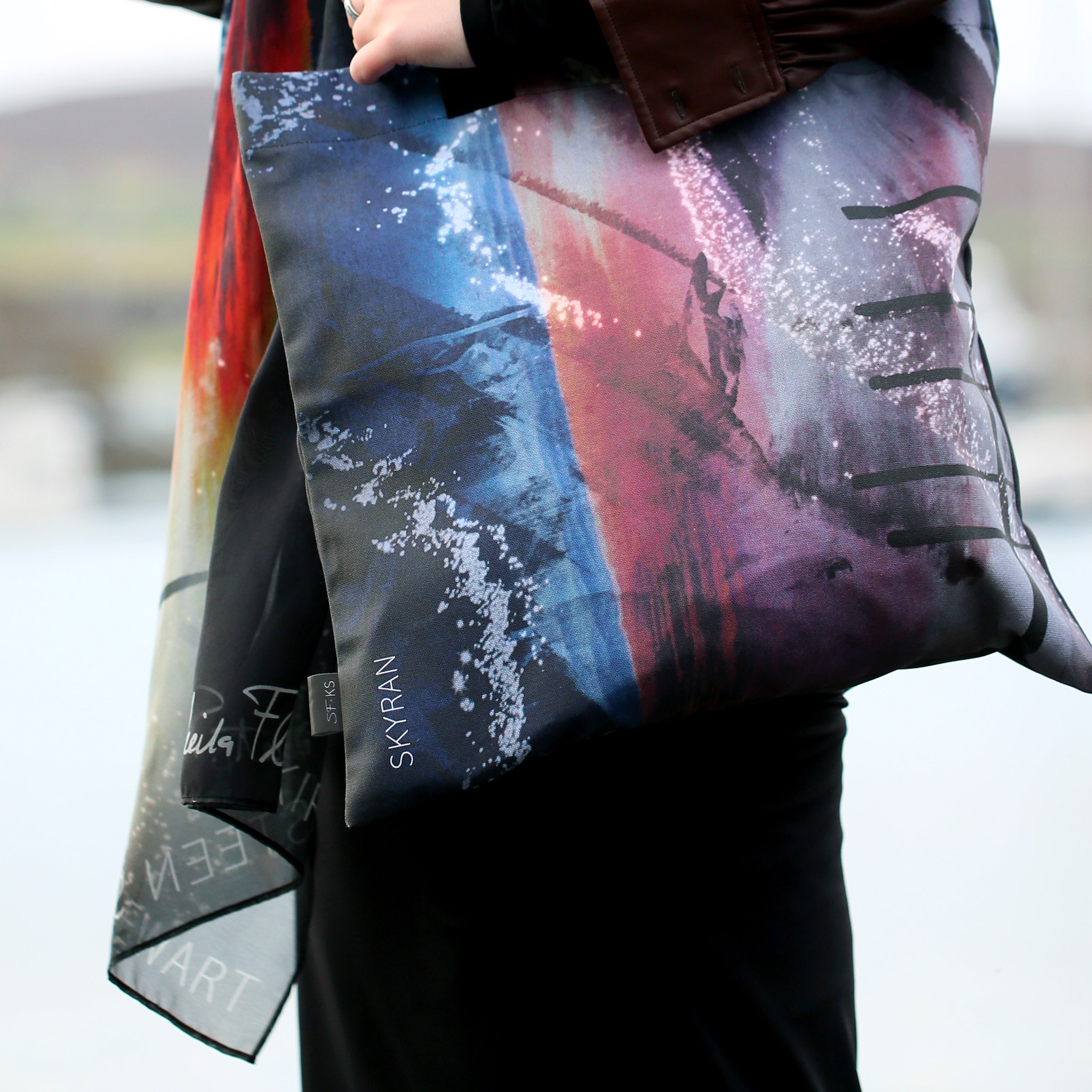
What makes Sheila Fleet diamond jewellery so special?
Diamonds are the centrepiece to many of Sheila's jewellery designs, particularly her solitaire diamond rings, but they also add the finishing touch to many of her other iconic designs, such as Rowan in 9ct Yellow Gold and Sheila's diamond-set Ogham collection. Every single diamond we use at Sheila Fleet Jewellery is expertly set by hand in our Orkney workshop and is ethically-sourced (we adhere to the Kimberley Process).

The following Guide to diamonds should help answer a lot of questions you might have about the diamonds used at Sheila Fleet Jewellery. If you want more information, or would like to discuss a different grade of diamond for use in Sheila’s designs, please contact Martin Fleet at the Orkney Workshop.
A short film to set the scene
As you'll notice in the short film above, we work with some beautiful gemstones at Sheila Fleet Jewellery. When it comes to diamond quality, there are four things you need to understand: Cut, Clarity, Colour and Carat. These are known collectively as the 4Cs; the universal standard for describing a diamond’s specific characteristics. The better the quality of the 4Cs, the higher the value of the diamond. So, what exactly are the 4Cs?
Cut
A diamond’s brilliance is largely determined by how it is cut. Perfectly symmetrical and aligned facets of a diamond ensure that light is reflected beautifully around the stone. At Sheila Fleet Jewellery we offer round brilliant-cut and princess-cut diamonds as standard.

Most of Sheila Fleet’s diamond-set jewellery uses round brilliant-cut diamonds, by far the world’s most popular cut and one that has developed over hundreds of years. Examples include Sheila's Celtic Knotwork 0.25ct Diamond Solitaire Ring, Venus 0.5ct Solitaire Diamond Ring and North Star 1.0ct Diamond Ring.
Princess-cut was developed in 1980 and, as its technical name of ‘square modified brilliant’ suggests, is square in shape. This is a popular cut for engagement rings. Our Princess Solitaire Diamond Ring Set is a beautiful example of a princess-cut 0.25ct diamond engagement ring with matching wedding band.
Clarity
A diamond’s clarity is determined by the number of natural imperfections within the stone. Here at Sheila Fleet Jewellery, we use ‘Slightly Included 1’ (SI1) diamonds as standard. SI1 diamonds have inclusions, or slight imperfections, that are noticeable only to a trained gemologist at 10x magnification. An SI1 diamond may have a single inclusion that is visible to the naked eye, but generally they are considered ‘eye clean’ with inclusions that can only be seen under magnification.
While we're confident you will get a beautiful diamond with our SI1-graded stones, we can, of course, source even higher-graded diamonds, with prices available on request.

Colour
Diamonds are classified as white (colourless) or as coloured diamonds. While coloured diamonds in pinks, blues and even yellow are highly prized and very rare, most diamonds found in jewellery will be white diamonds. White diamonds are graded from D-Z. Diamonds D, E and F are colourless and are the most expensive of the white diamonds. Our ¼ carat (0.25ct) diamonds are D-graded for colour, which is the optimum size to show the brilliant white shade of these precious gemstones.

Our smaller diamonds, under ¼ carat in size, are sourced from the top of the next group: near colourless. The colour difference is not visible to the eye in these smaller diamonds and the G-H grading keeps the cost more affordable. Our larger diamonds, over ¼ carat, are also G-H colour graded. At this size, the cost of D-graded diamonds rises sharply so the G-H is a perfect compromise of colour and cost, and ensures superb fire and sparkle in the stones. These G-H graded, near colourless, diamonds are also suitable for setting in white gold and platinum, two metals that can betray any sign of colour in a diamond.
Carat
Carat refers to the weight of a diamond, the word taken from carob seeds, which were once used in the ancient world as a reference for gemstone weight. One metric carat (ct) is equivalent to 200 milligrams—or 0.2g grams—and the heavier a diamond is, the more expensive it is. We have jewellery set with many smaller glittering diamonds, such as this Skyran 'Heaven' necklace, up to a magnificent, sparkling one carat diamond, set by hand in Sheila’s North Star 1.0ct Diamond Solitaire ring and Venus 1.0ct Diamond Solitaire Ring.


